The Second Empire in France, led by Napoleon III, brought political, economic, and social changes. Consolidating power, industrial development, and modernization of Paris were key achievements. However, challenges and opposition eventually led to the downfall of the Second Empire, leaving a lasting impact on France’s history.
This article will explore the reign of Napoleon III, examine the political landscape of the Second Empire, analyze its economic and industrial development, and discuss social and cultural changes. Additionally, it will look at opposition to the regime as well as its fall from power. By examining this period of French history, we can begin to understand how and why this regime ended so abruptly.
Napoleon III: The Architect of the Second Empire
Napoleon III, the architect of the Second Empire in France, was a charismatic and ambitious leader. Coming to power through a coup d’état, he skillfully consolidated his authority, transforming France into a modernized and centralized state.
With a vision for economic progress and urban transformation, Napoleon III implemented extensive infrastructure projects, encouraged industrialization, and embarked on the ambitious renovation of Paris. While his reign brought stability and development, his authoritarian rule and expansionist foreign policies ultimately contributed to the downfall of the Second Empire.
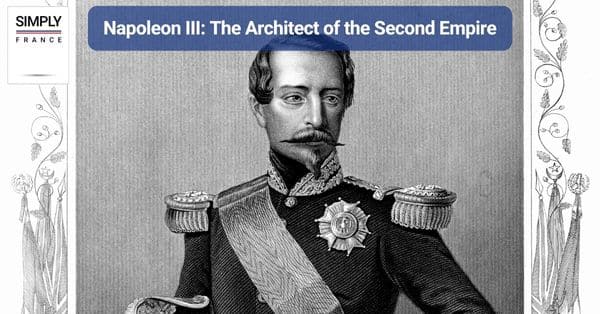
The Political Landscape: Consolidating Power
The political landscape during the Second Empire in France was characterized by Napoleon III’s efforts to consolidate power and establish a strong central authority. Following a successful coup d’état in 1851, Napoleon III dissolved the National Assembly, suppressed opposition, and implemented a new constitution that granted him extensive executive powers. He skillfully employed propaganda and a cult of personality to maintain popular support and legitimacy.
Napoleon III’s regime also relied heavily on a system of patronage, rewarding loyalists with positions of power and influence. He surrounded himself with a close circle of trusted advisors and utilized a vast network of informants to monitor dissent and suppress opposition. The political climate was marked by a combination of authoritarianism and limited political freedoms, as Napoleon III sought to centralize authority and consolidate his control over the government and military.
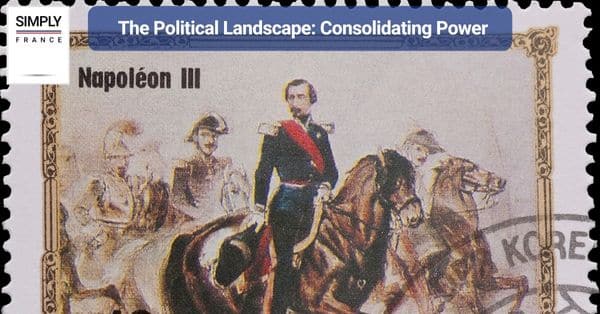
Economic and Industrial Development
One of the key ways in which Napoleon III accomplished this was through economic and industrial development. Here, we will explore the various ways in which the Second Empire contributed to the economic and industrial development of France.
Building Infrastructure
Under the Second Empire, France underwent a massive transformation in terms of its infrastructure. The government invested heavily in building roads, bridges, canals, and railways, which improved transportation and communication across the country. This made it easier for goods and people to move around, which helped to stimulate trade and commerce.
Encouraging Industrialization
The Second Empire also sought to encourage industrialization in France. The government provided subsidies and tax breaks to companies that established factories and created jobs. This led to a rapid expansion of the manufacturing sector, particularly in areas such as textiles, iron, and steel production.
Expanding International Trade
In addition to domestic reforms, the Second Empire also sought to expand France’s international trade. The government negotiated new trade agreements with other countries, which opened up new markets for French goods. This helped to boost exports and bring in much-needed foreign currency.
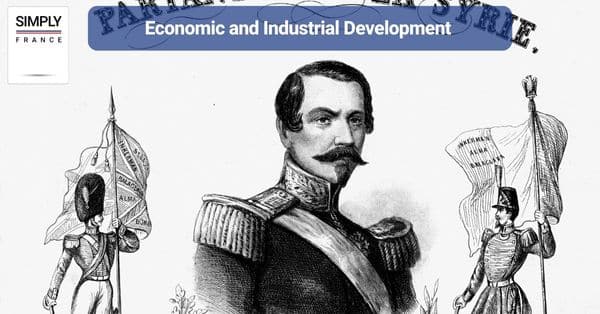
Urban Transformation: The Modernization of Paris
Under the Second Empire, Paris underwent a remarkable urban transformation as Napoleon III embarked on an ambitious project to modernize the city. Led by urban planner Georges-Eugene Haussmann, the extensive renovation efforts aimed to improve sanitation, alleviate congestion, and enhance the aesthetic appeal of the capital.
Wide boulevards were constructed, old buildings were demolished, and new parks, squares, and public spaces were created. The modernization of Paris not only enhanced the city’s functionality but also showcased its grandeur, leaving a lasting architectural legacy that continues to shape the city’s identity to this day.
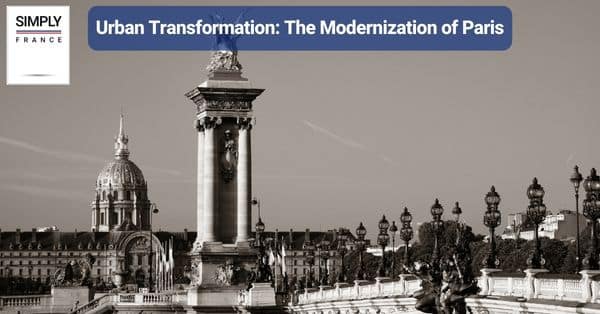
Foreign Policy and Colonial Expansion
During the Second Empire, the country saw a significant expansion of its colonial empire and foreign policy. It aimed to establish France as a dominant power in Europe and beyond. Here, we will explore the foreign policy and colonial expansion strategies adopted by the Second Empire.
The Pursuit of Territorial Expansion
Under the Second Empire, France pursued an aggressive territorial expansion policy. In 1860, the country annexed Savoy and Nice, which had previously belonged to the Kingdom of Sardinia. They also sought to expand their influence in Mexico by supporting the establishment of the short-lived Second Mexican Empire, which was headed by Napoleon III’s cousin, Archduke Maximilian of Austria.
In addition to territorial expansion, the Second Empire also aimed to increase its influence in Africa and Asia. France established protectorates over several West African states, including Senegal, Guinea, and Ivory Coast. They also strengthened their presence in Indochina, establishing French Indochina in 1862, which included present-day Vietnam, Cambodia, and Laos.
The Impact of Colonial Expansion
The colonial expansion policies of the Second Empire had a profound impact on the countries and peoples they conquered. In Africa, the French imposed their language, culture, and religion on the local populations, often through violent means. They also exploited the resources of the colonies, leading to economic and social inequalities that persist to this day.
In Indochina, the French established plantations and mines, exploiting local labor and resources for their benefit. They also imposed their culture and language on the local populations, leading to a loss of traditional customs and values.
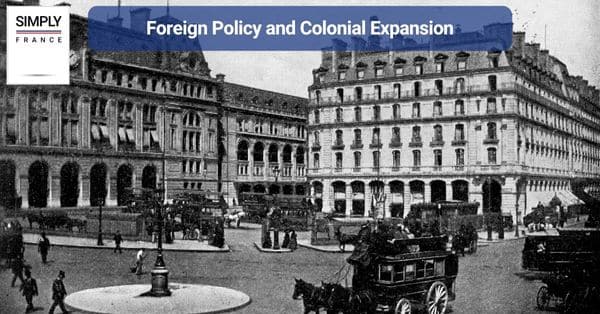
Social and Cultural Changes
The reign of Napoleon III saw the growth of industry, urbanization, and imperialism, and these developments brought significant transformations in the way people lived, worked, and interacted with each other. Here are some of the most notable social and cultural changes that occurred during the Second Empire:
Industrialization: France saw rapid industrialization during the Second Empire, with the growth of industries such as textiles, mining, and metallurgy. This led to the rise of a new class of industrialists and businessmen, who became influential in politics and society.
Urbanization: The population of Paris grew rapidly during the Second Empire, as people moved to the city in search of work and opportunities. This led to the expansion of the city and the construction of new neighborhoods and public buildings.
Imperialism: Napoleon III pursued an aggressive foreign policy, which led to the colonization of territories in Africa and Asia. This expansionist policy had a significant impact on French culture and society, as it led to the importation of exotic goods and exposure to new cultures.
Haussmannization: Napoleon III’s prefect of the Seine, Georges-Eugène Haussmann, transformed the city of Paris with his urban planning and redevelopment projects, which included the construction of wide boulevards, parks, and public spaces.
Art and Literature: The Second Empire was a period of great cultural production in France, with the emergence of new artistic movements such as Realism, Impressionism, and Naturalism. Writers such as Gustave Flaubert, Emile Zola, and Victor Hugo produced some of their most important works during this time.
Social Movements: The Second Empire saw the emergence of new social movements, such as the workers’ movement and the feminist movement. These movements sought to improve the working and living conditions of ordinary people and contributed to the growth of political activism in France.
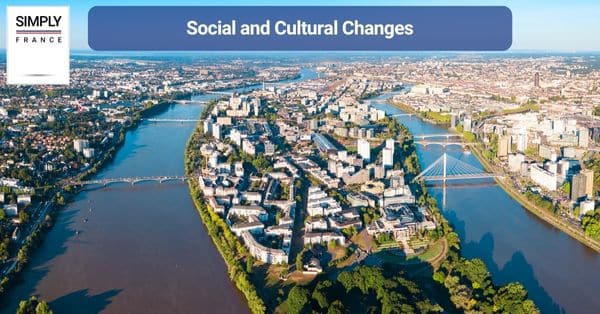
Opposition and Challenges to the Second Empire
The Second Empire faced opposition and challenges throughout its reign. Here are some of the key factors that contributed to this:
1. Republicanism– The Second Empire was established after a coup d’état in 1851, which overthrew the Second Republic. Many Republicans opposed the new regime and sought to restore democracy.
2. Nationalism– France’s expansionist policies under Napoleon III led to foreign conflicts, including the Crimean War and the Franco-Prussian War. Nationalists opposed these wars and criticized the government’s foreign policy.
3. Economic issues– The Second Empire experienced economic downturns, particularly in the 1860s. High unemployment rates and inflation led to social unrest and strikes.
4. Social inequality– Despite some social and economic reforms, the Second Empire maintained a rigid social hierarchy that favored the wealthy and privileged. This led to growing discontent among the working classes.
5. Political opposition– Opposition parties and movements, including the Republicans, Socialists, and Communards, challenged the legitimacy of the Second Empire and sought to overthrow it.
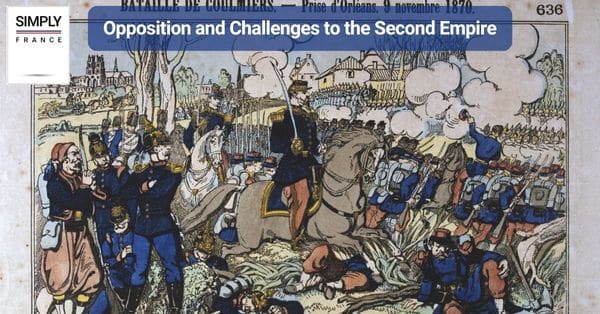
The Downfall of the Second Empire
The downfall of the Second Empire in France was precipitated by a series of events and challenges that ultimately led to its collapse. Growing discontent among the working class, economic instability, and military setbacks eroded support for Napoleon III’s regime.
The disastrous Franco-Prussian War of 1870 further weakened the empire, resulting in Napoleon III’s capture and the collapse of the government. The subsequent rise of the Paris Commune and the widespread disillusionment with the empire’s perceived failures ultimately sealed its fate, marking the end of the Second Empire and paving the way for the establishment of the Third Republic.
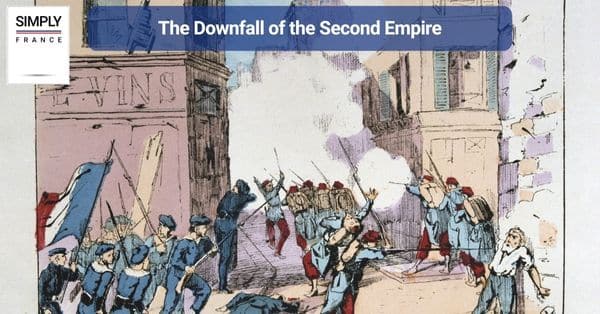
In conclusion
The Second Empire in France marked an important period of change and development for the country. Led by Napoleon III, the regime brought political, economic, and social changes. It sparked industrialization, modernization of Paris, and colonial expansion. However, opposition and challenges eventually led to its downfall in 1870.
By examining this period of French history, we can gain a deeper understanding of how and why this regime ended so abruptly. Despite its short lifespan, the Second Empire had a lasting impact on French society that still reverberates today.


